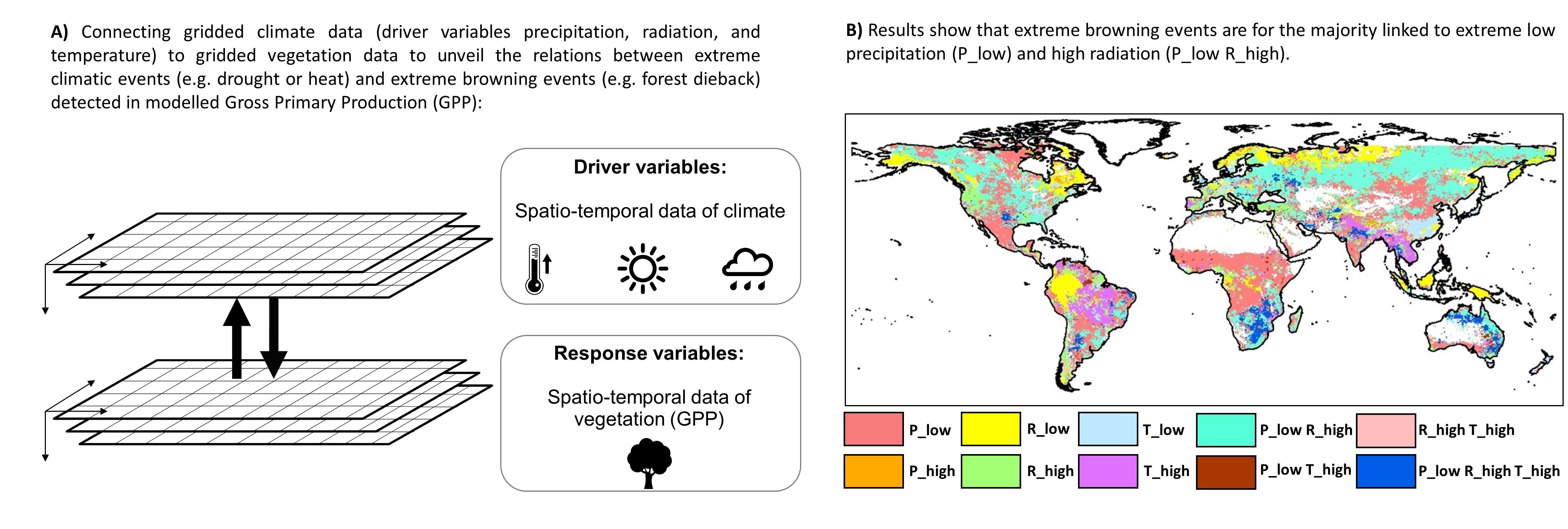Climate extremes impacts on terrestrial vegetation
The terrestrial biosphere is a key component of the carbon cycle, taking up about one third of anthropogenic CO2 emissions from the atmosphere. In the future, however, the increasing occurrence of climatic extremes could significantly decrease the efficiency of this land carbon sink. Within the framework of the Belspo SAT-EX project, we investigate how vegetation extremes (e.g. forest dieback, vegetation greening or browning) are driven by climatic extremes (e.g. heatwaves, droughts, heavy precipitation) and how they change in frequency and intensity over the satellite era (approx. 1980-2010).

Terrestrial carbon fluxes to aquatic systems


Left : Fluxes of terrestrial-derived carbon into the river network of the Amazon basin, as simulated by the ORCHILEAK model .
Right : Spatial pattern of river-floodplain CO2 evasion (modified from Lauerwald et al., GMD, 2017).